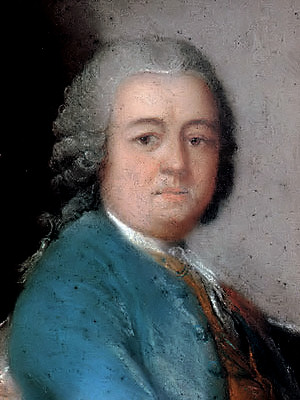The Sebastians wrap tenth season in style with music of two Bach cousins

The Sebastians wrapped their tenth season with (aptly) the music of Bach and his contemporaries Saturday afternoon at Madison Avenue Presbyterian Church. The concert commemorated a journey that began with a chamber music party in 2001 and evolved into the formation of one of America’s top early music ensembles.
For this concert, the Sebastians’ core quartet of two violins, cello, and harpsichord, was augmented with oboe, bassoon and additional strings. Soprano Clara Rottsolk, countertenor Wee Kiat Chee, tenor James Reese, and baritone Tyler Duncan performed in Johann Sebastian Bach’s Mass in G major, which formed the spine of the concert.
Unlike Bach’s monumental Mass in B minor, the Mass in G major is in just two movements, the Kyrie and the Gloria. Rather than perform it as a work onto itself, however, instrumental works by Bach and his cousin Johann Ludwig Bach were inserted between the sections of the mass.
Jeffrey Grossman, the Sebastians’ current artistic director, provided the rationale for the structure of the concert. In the context of an actual mass, he explained, the two movements would be separated by prayers, readings, and hymns. In this performance, secular instrumental music was to provide a similar space between the sections of the mass. The concept made for some aurally arresting musical juxtapositions, but also tended to rob the mass of any semblance of continuity or coherence.
Grossman opted for a quartet of soloists to perform the mass. In the relatively intimate space, balance and blend between singers and orchestra were never an issue, although the acoustic favored Rottsolk’s soprano. Even in the rather dense contrapuntal writing of the Kyrie, the vocal lines emerged with clarity.
Bach set most of the text of the Gloria in the Mass in G major for solo voices. Duncan’s fine baritone coupled with his sensitivity to text lent the “Gratias agimus” a buoyant elegance. Rottsolk and Wee Kiat’s voices floated through the church in the “Domine Deus” with the flowing melodies in parallel thirds, which they sang perfectly in tune.
The most bravura singing was provided by Reese in the “Quoniam.”Gaia Satermoe-Howard played the oboe obbligato with a poignant, pliant sound that perfectly complemented Reese’s shining tenor and forthright delivery. Their execution of the intricate ornamentation with which Bach adorned the musical line was captivating.
The music that separated the sections of the mass were movements of JL Bach’s Ouverture-Suite à 4 in G major. Johann Sebastian was well acquainted with his distant cousin’s work and performed his religious choral works in Leipzig. A significant amount of JL Bach’s choral music has survived, but almost none of his orchestral music. The Ouverture-Suite à 4 in G major is one of the few we have.
If Grossman’s aim was to achieve a musical contrast between the weightier sounds and sentiments of Bach’s mass and the lightness and grace of a Baroque orchestral suite, the mission was accomplished. The interplay in JL Bach’s suite between strings and woodwinds was particularly delightful and the concluding quick-paced Bourrée a perfect coda to the concluding strains of the mass.
Tossed in between the “Domine Deus” and the “Quonium” was the Allegro from JS Bach’s Concerto in E major for violin, strings, and continuo BWV 1042. The familiar music came as somewhat of a jolt, even if it was a welcome one. It also afforded Lee the opportunity to enchant the audience with the beauty of his tone and virtuosity. Cellists Sarah Stone and Nathan Whittaker created wonderful, churning sounds as they dug into the continuo parts.
The concert was bookended by instrumental works of composers whose music was well known and esteemed by JS Bach. Georg Philipp Telemann, whose Concerto No. 1 in G major for 4 violins without bass opened the concert, was not only a close friend of JS Bach, but also the godfather and namesake of his son Carl Philipp.
The brief four-movement work with its alternating slow/fast sections was a showcase for violinist Nicholas DiEugenio, who is also one of the four core members of the Sebastians. He led the other three violinists in a captivating musical conversation that ended with the high-spirited Vivace.
The Sebastians’ tenth season concluded with Lee’s stylish playing once again front and center in the Passacaille from Fischer’s Le Journal du Printemps Op.1 No.4 and the entire ensemble performing Handel’s well-known Passacaglia from the Trio Sonata in G major HWV 399. This dollop of French style served as an enchanting ending to this musical potpourri—capturing the spirit and talents of this remarkable ensemble and the music couldn’t have been performed with more flair or affection.
The Sebastians’ eleventh season commences with “Bach: Concerti” on September 10. sebastians.org







